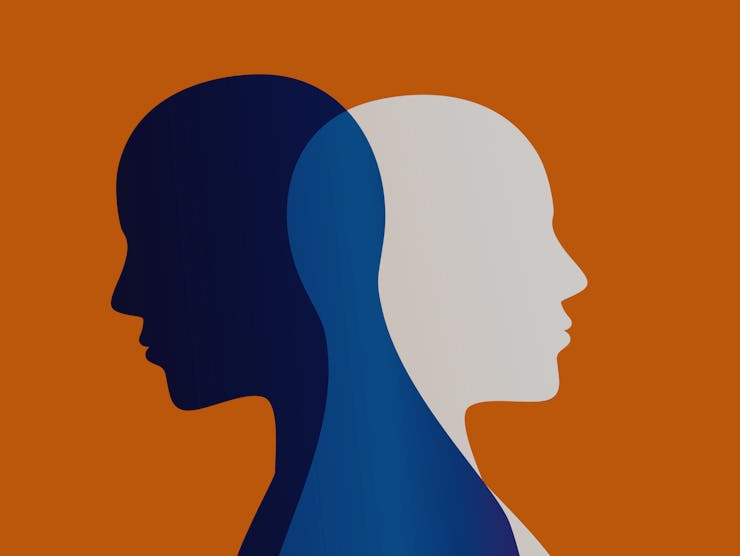The difference between SAD and the winter blues comes down to 1 factor
As of now, three treatment options are the best for SAD.

Seasonal affective disorder, or SAD, is estimated to affect at least six percent of Americans. It could affect more: Many people aren’t officially diagnosed. SAD is a type of depression, and there’s still a stigma linked to seeking help for mental health.
Kathryn Roecklein is an associate professor of clinical and health psychology at the University of Pittsburgh. Her laboratory conducts research on seasonal affective disorder (SAD) and explores the biological, psychological, environmental, and interpersonal factors that might affect the condition. Her goal is that the lab’s research can eventually lead to new SAD interventions — treatments that can help individuals who don’t feel relief from the available options.
The following is an interview with Roecklein, who’s been interested in SAD since 1992. Here she explains what SAD treatments are currently available, the drivers of SAD, and how sleep may play a role.
A version of this article also appears in the Sunday Scaries newsletter. Sign up for free to receive it on Sundays.
Is there a guideline that experts use to determine whether or not a person is experiencing SAD, or is perhaps just feeling winter gloominess?
Yes. We look for depressed mood for most of the day, nearly every day, for two weeks straight. We also look for signs of anhedonia, or loss of interest. So, if you’re typically interested in actions like seeing your friends or going to the gym, and then all of a sudden you’re just not as interested in those things and that feeling continues for two weeks straight, then the threshold for SAD has likely been met. The more transient feelings of gloominess that come and go don’t quite meet the threshold.
What currently available interventions do you think stand the best chance at helping people with SAD feel better?
One of the things that is kind of great about SAD is that there are actually three treatments that have really solid evidence behind them. The first is bright light therapy. About half of the people with SAD benefit from that, which is a really great treatment response in the field of depression.
Then there’s at least one antidepressant that is specifically FDA approved for SAD — although, since SAD is depression, they are all technically approved for the condition.
Seasonal affective disorder is a type of depression.
And then there is cognitive behavioral therapy for SAD, or CBT-SAD. The manual for it is called Coping with the Seasons and you can get it on Amazon.
It’s by Kelly Rohan, the scientist who tested this treatment with randomized control trials. The thing that is neat about CBT-SAD that isn’t true of light therapy or antidepressant medications is that if you were to use CBT-SAD this winter, you would have a lesser chance of getting depressed next winter. It works off a prevention model and teaches one how to change how they think and behave.
Are there specific factors that prompt SAD, or is it simply driven by the increased darkness seen in wintertime?
We think it’s a combination of things. So, there might be some psychological factors that prompt the disorder; there’s biological factors. We all experience the change in seasons, but not all of us have a biological risk of developing SAD in response.
But it is also triggered by light levels — we’re pretty certain of that. But there also has to be something else about individuals who are vulnerable, whether it’s a biological vulnerability or a psychological vulnerability that, combined with the winter season, creates a SAD episode.
One of the subjects your lab is investigating is whether or not sleep might be a target of intervention in SAD. Is it fair to say that people who have worse sleep are more likely to feel the sting of SAD if they are already likely to experience it?
It stands to reason, but we haven’t studied that yet, so I can’t say yes or no. What we do know is that about 80 percent of our patients in the SAD group have problems with sleep — we just don’t know which came first at this point.
In the field of non-seasonal depression, researchers have found that they can treat insomnia in people with depression with cognitive behavioral therapy for insomnia, or CBT-I. This not only improves insomnia, but it also improves mood.
Bright light therapy is one treatment available for SAD.
The problem with people with SAD is that more of them report hypersomnia [excessive daytime sleepiness] than insomnia, and the majority actually report hypersomnia and insomnia. What we need to do is figure out what treatments would work for hypersomnia, and what treatment would work for people with both hypersomnia and insomnia. That’s what my student Delainey Wescott is working on for her Master’s thesis.
Do people often come to you for SAD advice?
I would say less than I would have imagined. I think there’s still a lot of stigma around mental illness, and also a lot of weariness about treatments and feelings of shame if you need to use one of the treatments. But I think that articles and newsletters like this are doing some of the most important work in letting people know how common these experiences are, and letting people know that there’s something that can be done. I think a lot of times people just don’t look into it because they don’t know if there’s an easy or successful treatment out there.